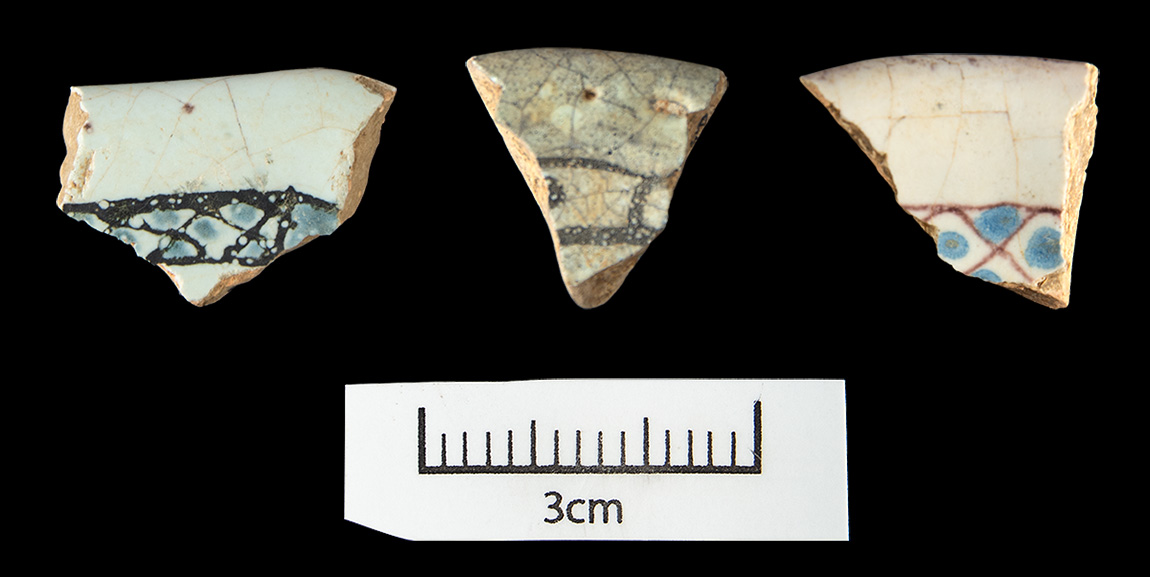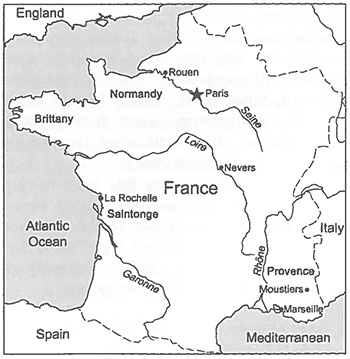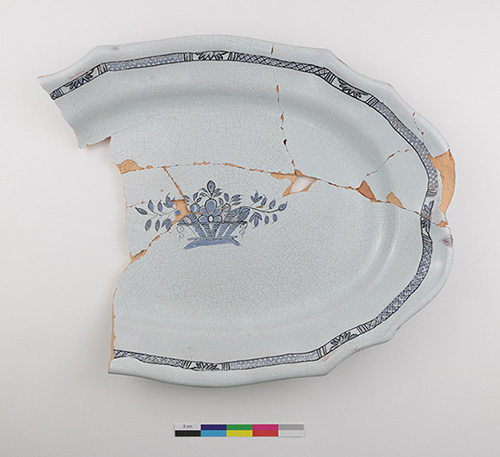
by Kathleen Cande
Artifact of the Month – December 2020

These three sherds are fragments from plates made of tin-glazed earthenware or faience. The city of Rouen, France was one center for production of faience beginning at least in the 1540s. Rouen is on the Seine River at the eastern edge of Normandy (Figure 2). Ceramics craftsmen in France imitated forms and techniques associated with the Italian town of Faenza, producing faience. An Italian potter moved to France and set up a workshop making faience in the 1700s (Moon 2016). Other French cities became known for creating variations in vessel forms and decorations. The addition of tin oxide to the glaze gives faience an opaque, white background on which different colored decoration could be painted. Blue was a very popular color (Furnishing New France 2020). Faience production reached its peak by 1730 (Brain 1979:35).
The reverse, or back of this plate is dark brown. It is called faience brune since it has white tin glaze on the vessel interior (or front), and a manganese brown lead glaze on the exterior (or back) (Noel-Hume 1960). French faience is among the least studied European ceramics found at North American archeological sites. Many published resources focus on the most elaborate vessel forms and those with polychrome, or multicolored, decoration (Waselkov and Walthall 2002:63). The most common Rouen Blue on White vessel forms found at colonial French sites in the United States are large oval or round platters and circular, deep plates (Walthall 1991a:93) (Figure 3).

All of these sherds were found in archeological excavations in 1956 and 1957 at Arkansas Post National Memorial in southeast Arkansas (Holder 1957). They were most likely manufactured between 1740 and 1800, according to a study by archeologist John Walthall (Walthall 1991b:105). Walthall also observes that the French did not use pottery like the English or Americans. Tea was not an important part of their culture. Plates and platters were the most common forms; teawares were very rare. Faience was not used like everyday, utilitarian wares. The French, unlike the Spanish, were not cooking in pottery at this time either (Walthall 2002:78, 81).
The Arkansas Archeological Survey curates archeological collections from Arkansas Post National Memorial. As part of this responsibility, we have catalogued the collections in the National Park Service’s cataloging system and provided copies of the catalog data to the regional headquarters at the NPS’s Midwestern Archeological Center in Lincoln, Nebraska.

